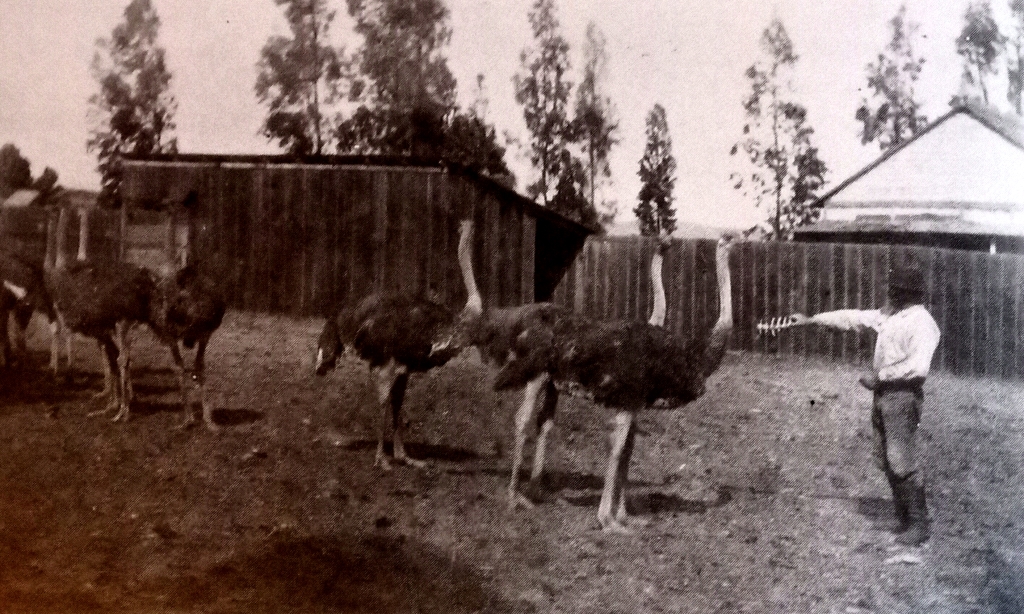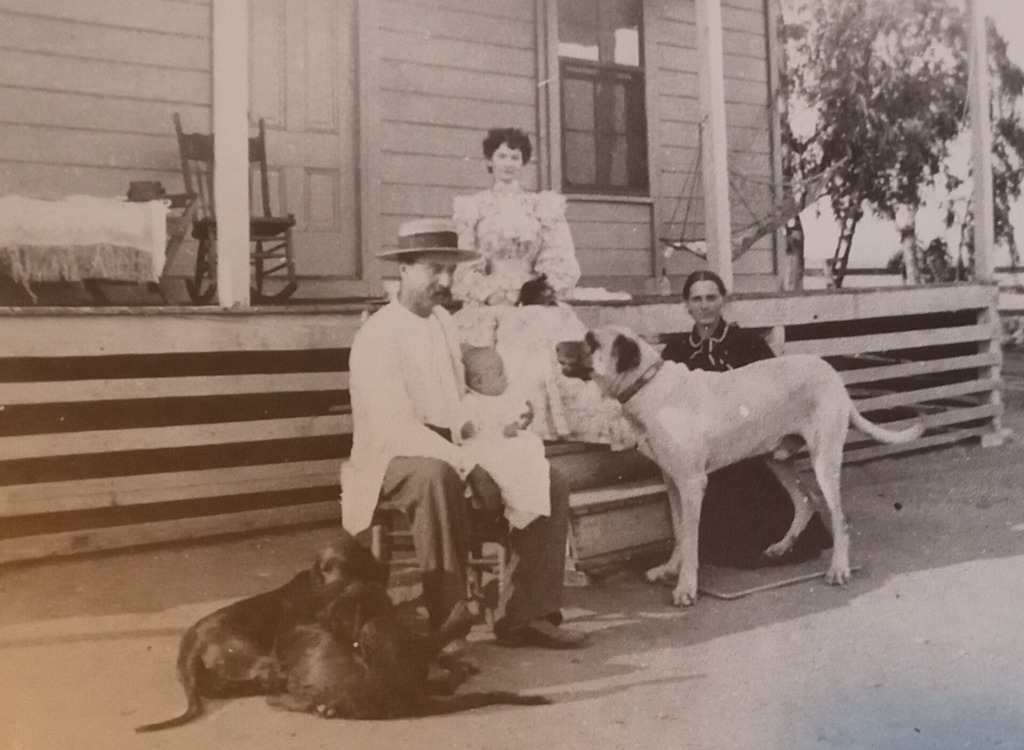The following is from a work-in-progress about the history of Fullerton. You can support my ongoing research and writing on Patreon.
Edward Atherton, farmer and owner of the Fullerton Ostrich Farm in the late 1800s and early 1900s, was born in Capetown, South Africa, in 1860.
In 1886 Atherton came to California to sell ostrich plumes, initially partnering with Col. R.J. (“Diamond Bob”) Northam, an important early settler and a manager of the Stearns Rancho Company.
The ostriches were moved to a ranch owned by Mr. Atherton, who eventually bought out Northam’s share of the company.
The Fullerton Ostrich Farm was located north of Dorothy Lane and east of Acacia Avenue on the property now occupied by Acacia School and St. Juliana’s Catholic Church.
Atherton was cashing in on the ladies’ fashion craze of wearing hats with ostrich plumes.
Atherton began with 47 birds, but these quickly multiplied to between 100 and 200 by 1899, due in part to an incubator that Atherton invented for the large eggs. That year, Orange Coast Magazine dubbed Fullerton “the ostrich capital of the continent.”

According to Ziebell, the farm was a big tourist attraction, the Knott’s Berry Farm of its day: “Tourists just had to visit the gangly, often ornery, big birds (mature ostriches stood six to eight feet tall and weighed up to four hundred pounds) with the big beautiful plumes so desired by the fashion conscious ladies of the day; even the locals liked to visit.”
Atherton’s ostrich farm was the inspiration for the title of Dora Mae Sim’s book Ostrich Eggs for Breakfast (A History of Fullerton for Boys and Girls). “What the boys liked to do best of all was to feed oranges to the big birds. The ostriches liked oranges to eat. They never chewed them. They swallowed the oranges whole. The boys liked to watch the round oranges go GULP, GULP down the long necks of the ostriches!” Sim writes.

In an article in the Fullerton Daily News-Tribune, Doris Lee wrote that in the heyday of Atherton’s farm, “In the springtime, a faraway bellowing coming from the foothills of northeast Fullerton would float down into town and children would make their way up through the fields right outside of town…and go visit the source of that sound. It was mating season on Edward Atherton’s ostrich farm, and the sound of some 200 huge birds singing love songs broke the pastoral stillness and echoed down to the city,”
In 1897, Atherton married Miss Carolina J. Sellinger, daughter of John Sellinger, an early local grape grower of Anaheim. They had three children: Malcolm, Miranda, and Dalton.

Unfortunately, as with all fashion fads, ostrich feathers eventually went out of style, and Atherton adapted by reducing his birds and focusing on the more reliable crops of oranges and walnuts.
However, Atherton kept about a dozen ostriches on his farm until at least the 1920s, as a tourist attraction.
A hollow ostrich egg from Atherton’s farm is (supposedly) housed at the Fullerton Public Library.
Leave a comment